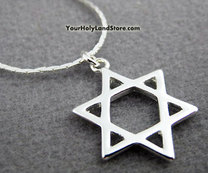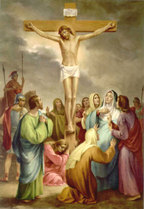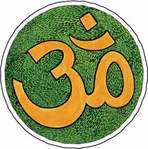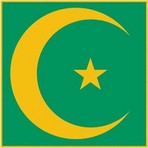Funerals are sacred rituals that are distinct to each different culture and religion. Funerals are the first step in the mourning process of remembrance of loved ones and friends who have left the earth.
Judaism

The Jewish funeral is very holy and one should approach it with simplicity and the ways taught by the Jewish tradition. The family of the deceased should tell a Rabbi (the head of the temple) when a death occurs. For a Jewish funeral planning before hand is probably a good idea. The Jewish religion believes that a body till keeps its holiness. When a Jewish person dies, the eyes are shut and the body is covered and laid on the floor and candles are lit around it. As a sign of respect the body is never left alone and is guarded day and night by shomerim, which means guards. Jewish people have the greatest respect for the dead and the funeral and mourning practices are very religious and solemn. There are no flowers, music, or viewing of the body at Jewish funerals. The mourning rituals are very lengthy in the Jewish religion. After the funeral the family and other loved ones go into a seven day mourning period called shiva, which means seven and this also has to do with the seven days of the week. During these seven days mourners sit on low platforms, they don't wear leather, shave or cut their hair, wear cosmetics, work, bathe, have sex, put on fresh clothing, or study torah. All mirrors are covered up during this time. Shiva is followed by schloshim (thirty) during which mourners don't listen to music, shave or cut their hair, and don't attend parties or celebrations. The last period, avelut, lasts for 12 months from burial and is observed only for a parent. During avelut, mourners do not go to parties, the theater or concerts.
http://www.religionfacts.com/judaism/cycle/mourning.htm
http://www.religionfacts.com/judaism/cycle/mourning.htm
Sikh

The Sikhs view death as a separation of the soul from the body and is considered part of God's will. Any visual signs of grief are kept to a small amount because god meant for death to occur. Cremation is the form of the disposal of the body in this culture; the body is bathed and dressed before cremation occurs. Men wear black headscarves and women wear light colored or white headscarves for symbolic purposes. Ashes are scattered in a place of sentimental value such as an ocean. After the cremation guests return to the family home and readings are given and songs are sung. Neighbors and families make meals for the mourning family and as soon as anyone gets home they most bathe to purify themselves. A candle, jyot, is burned inside the home, which purifies and cleanses the home. The mourning period following lasts between two and five weeks.
Christianity

"Christ has died, Christ is risen, Christ will come again."
When a Christian dies, it is their end of their life on earth. A funeral is held to remember the person and give thanks for their life. The funeral is held approximately a week after the death and takes place at a church or sometimes a crematorium. Prior to the funeral a wake is held and prayers are said over the body. They believe in resurrection because of Jesus and sometimes bright colors are worn to celebrate and remember that persons life.
When a Christian dies, it is their end of their life on earth. A funeral is held to remember the person and give thanks for their life. The funeral is held approximately a week after the death and takes place at a church or sometimes a crematorium. Prior to the funeral a wake is held and prayers are said over the body. They believe in resurrection because of Jesus and sometimes bright colors are worn to celebrate and remember that persons life.
Hinduism

The Hindu belief is that reincarnation occurs after death. They perceive death as moving on to reach Heaven or Nirvana. Hindus celebrate and remember their deaths in mourning and celebration because they will come back in another life. Family members and friends focus on the path the soul takes to heaven and beyond that still. Family members pray around they body and the corpses is dressed and cleaned. Hindu's cremate their dead because they believe that burning of the body releases the spirit. The funeral of Hindus marks the beginning of a 13-day mourning period in which friends and family visit with each other and remember the person in happiness and sadness.
Islam

After the death of a loved one or friend the relatives and friends observe a three day mourning period. Widows extend the mourning period because of the loss of their spouse. People in the community wash the body and the deceased is transported to a site of funeral prayers held outside. The deceased is then taken to the cemetery for burial. All the members of the community attend the funeral, only men of the community can accompany the body to the grace. The departed is laid in the grave on his or her right side, facing Mecca, where they are supposed to make a pilgrimage to in their life time. x
Sources:
http://www.uscj.org/guide_to_jewish_fune6211.html
http://www.religionfacts.com/judaism/cycle/death.htmhttp://www.efbox.co.uk/os-other-cultures.htm
Pictures:
http://www.yourholylandstore.com/images/acc292_1_star_of_david_necklace.jpg
http://www.ahnsahnghong.us/wp-content/uploads/2009/10/Jesus-dies-on-cross-prose.jpg
http://2.bp.blogspot.com/_A0G8x4YSZvw/SNJn_b00HCI/AAAAAAAAE9s/f_NYR1BApRM/s400/islamic+symbol.jpg
http://www.himalayanacademy.com/resources/books/dws/images/dws-t-is-one-Hinduism.jpg
http://media.photobucket.com/image/sikh%20symbol/benchilada/SikhKhandasymbol.png
http://www.uscj.org/guide_to_jewish_fune6211.html
http://www.religionfacts.com/judaism/cycle/death.htmhttp://www.efbox.co.uk/os-other-cultures.htm
Pictures:
http://www.yourholylandstore.com/images/acc292_1_star_of_david_necklace.jpg
http://www.ahnsahnghong.us/wp-content/uploads/2009/10/Jesus-dies-on-cross-prose.jpg
http://2.bp.blogspot.com/_A0G8x4YSZvw/SNJn_b00HCI/AAAAAAAAE9s/f_NYR1BApRM/s400/islamic+symbol.jpg
http://www.himalayanacademy.com/resources/books/dws/images/dws-t-is-one-Hinduism.jpg
http://media.photobucket.com/image/sikh%20symbol/benchilada/SikhKhandasymbol.png
